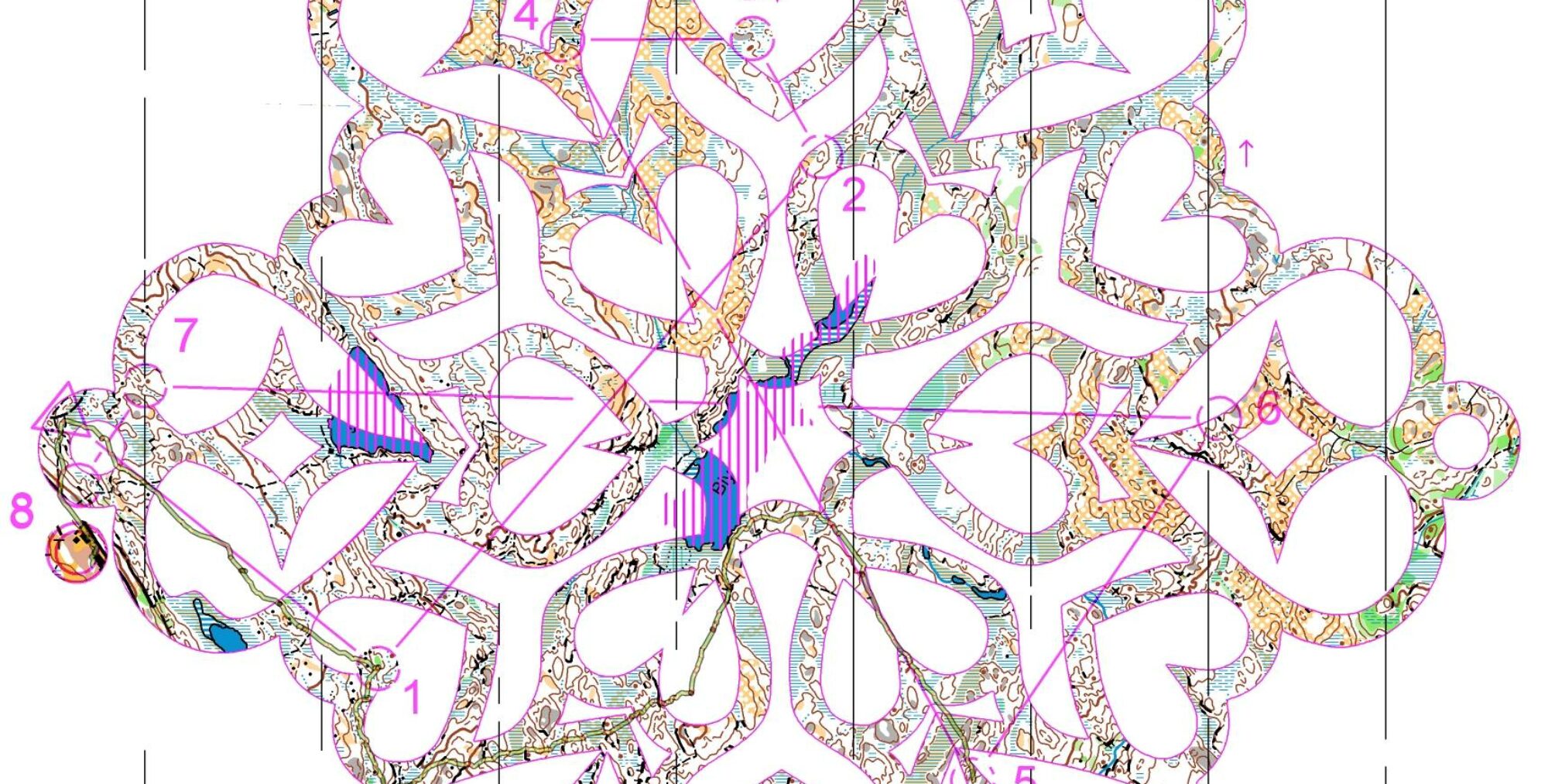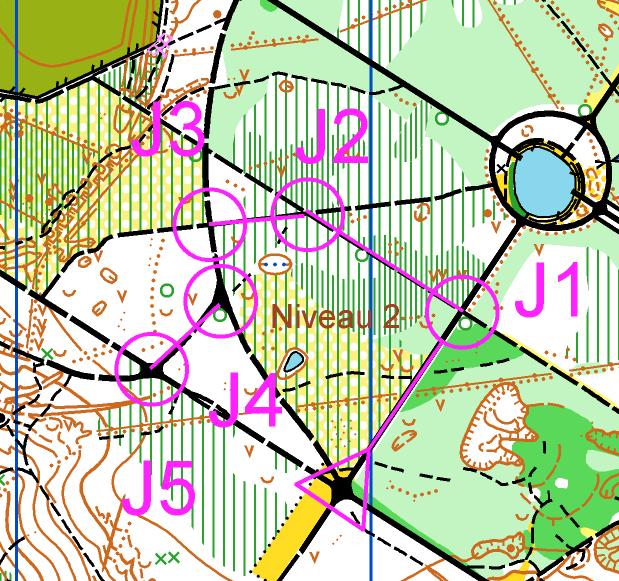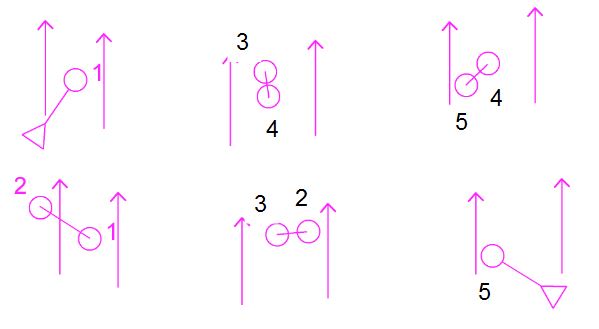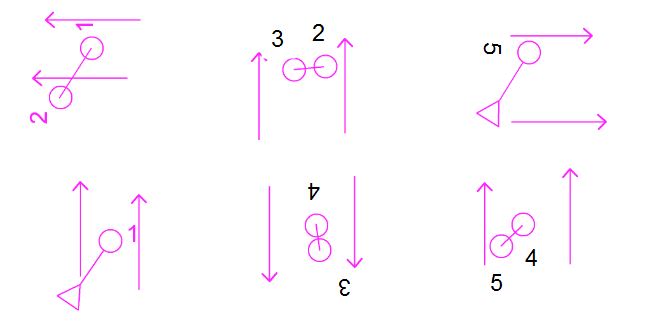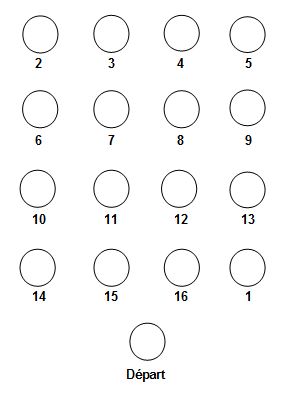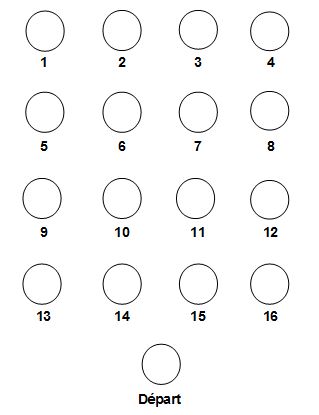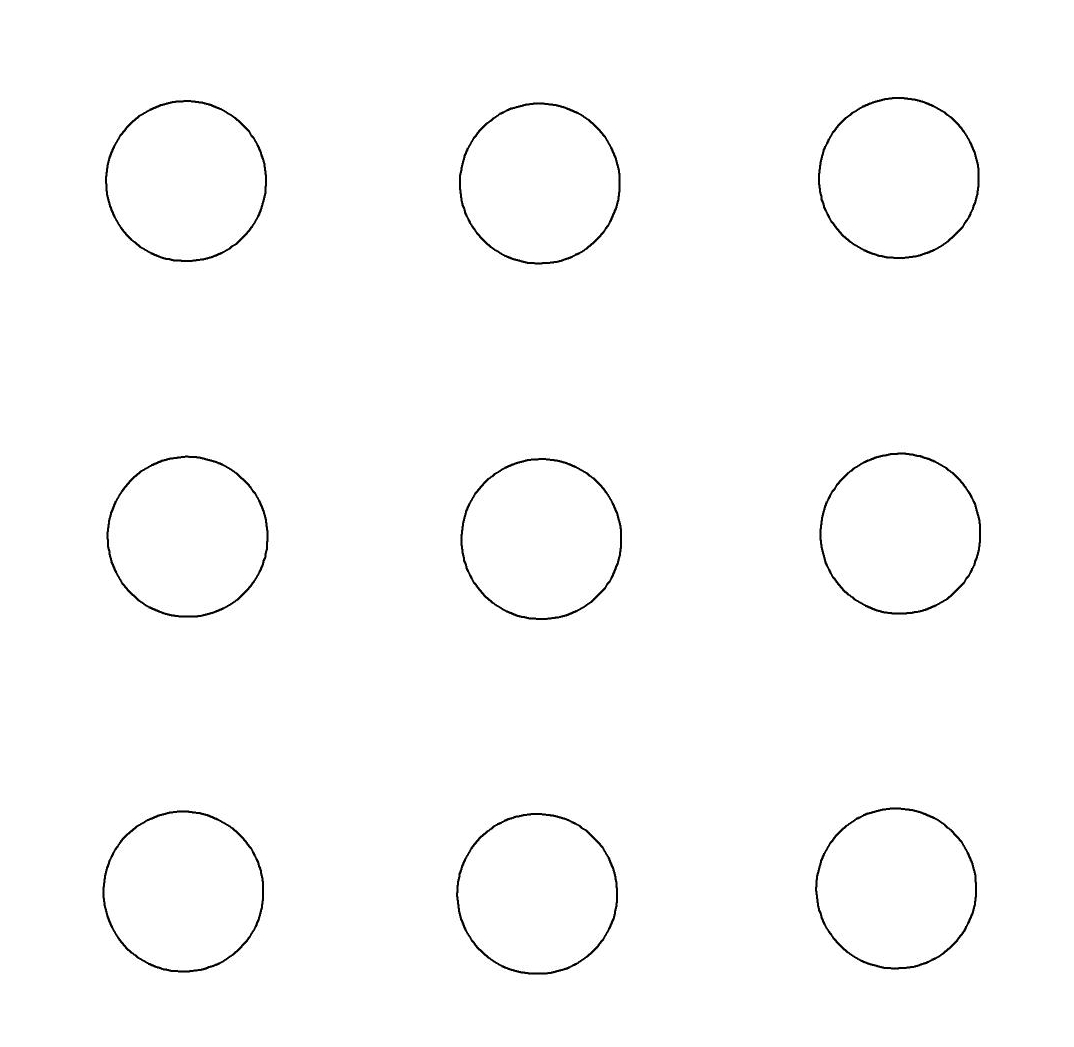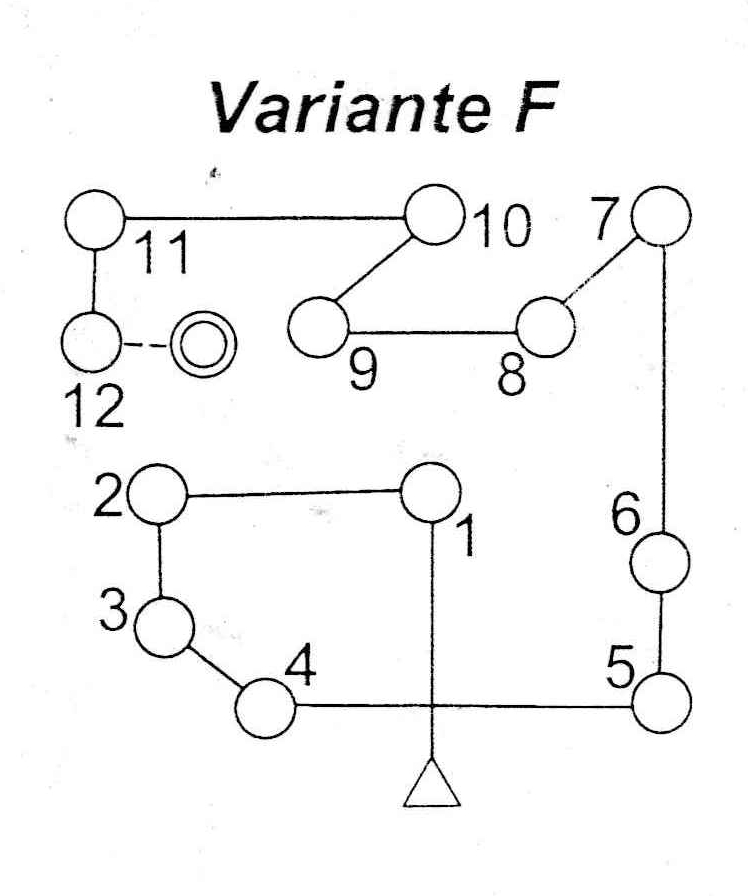Description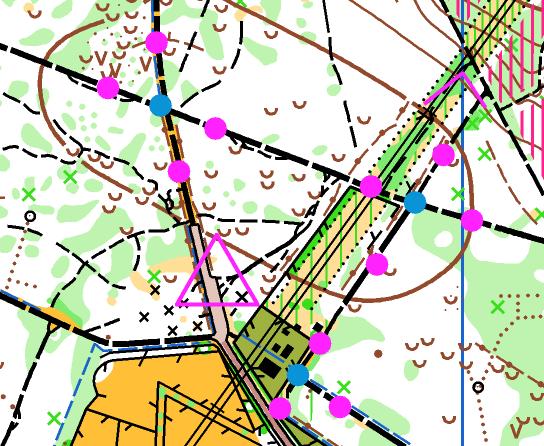 You have here the all controls map and an example of course below. At each blue point, you have between 3 and 4 possible combinations. So you can make many different courses.
You have here the all controls map and an example of course below. At each blue point, you have between 3 and 4 possible combinations. So you can make many different courses.
Go with your group to the blue point. At the given signal, “fireworks”: each runner goes on the path indicated by the purple dot on his map. We check that each runner is on the right path, and we go to the next blue point.
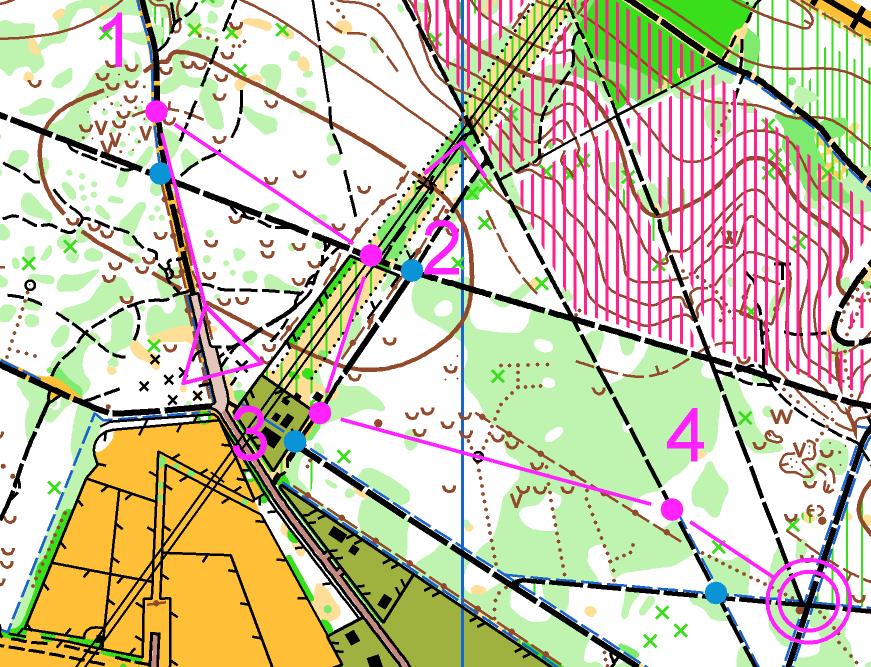
Alternative
Comment
- This exercise doesn(t need to put out controls and in a group, so perfect with a group of young beginners.
- plan many courses so that at each blue dot, the young people who find themselves on the same path are not always the same ones (otherwise they quickly understand that they do not need to think too much…)
- In order for the blue dot to appear on all the courses, create an object in Ocad and check the box “not used in the route projects”. (OCAD 9
)
Contributor
Nathalie Rauturier
